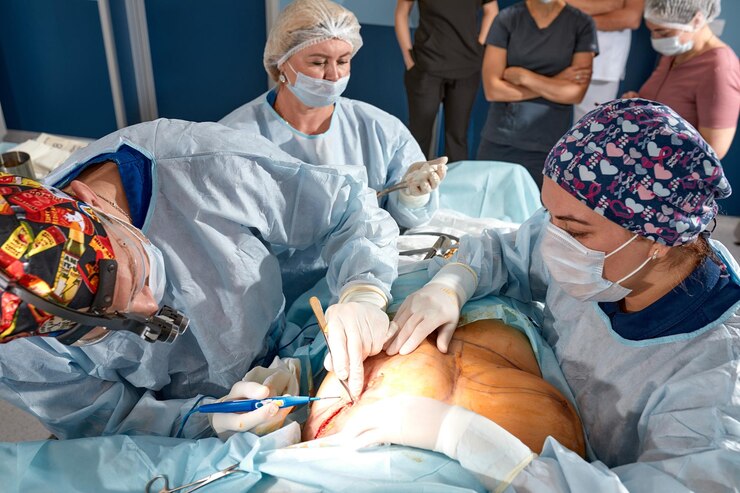User-Centered Design in Medical Device Development: Putting Patients First
Are you designing a product for healthcare? Wondering how to make it truly patient-friendly? In the current healthcare environment, putting patients first is key to success. But how do you ensure your design meets their needs? This article will explore how user-centered design can enhance medical device development and ensure better outcomes for everyone involved.
Understanding the Basics of Design
Medical device design is about more than just functionality. It’s about making products that are easy to use, safe, and effective. In user-centered design, the end-user—often a patient—is at the heart of the development process. Designers need to understand how the product will be used and how it can improve the patient’s experience.
Key factors in this approach include:
- Usability and accessibility for users.
- Make sure the gadgets are intuitive and simple to use.
- Gathering feedback directly from patients during the design phase.
Why Patients Should Be Involved in Development
Involving patients in the early stages of product development is crucial. Who better to inform the design than the people who will use the product every day? Direct input from patients can lead to significant improvements in usability and comfort.
Benefits of patient involvement include:
- Identifying issues that developers may not have considered.
- Increasing the likelihood of user adherence to using the device.
- Enhancing the overall safety of the product.
Patient-Centered Devices
When designing products that focus on the patient, several key features must be prioritized to ensure they are both effective and user-friendly. Ease of use is essential, as the product should be simple for patients to understand and operate with minimal effort. Comfort is another crucial factor, requiring careful attention to materials and design elements that enhance the overall experience. Safety features are equally important, helping to minimize the risk of user error and ensuring reliable performance. Additionally, portability should be considered so the device is easy to transport and use in various environments, making it more practical for everyday use.
Testing with Patients During Development
Key steps in testing include:
- Gathering initial feedback: In the early stages of development, invite patients to use prototypes and share their honest opinions. This feedback can reveal usability issues or discomfort that might not be obvious to developers. Early insights help shape the design and ensure it aligns with patient needs.
- Observing usability: Carefully watch how patients interact with the product during testing. Take note of any struggles they face, such as confusion over controls or difficulty in handling the device. This real-world observation is critical for identifying design flaws.
- Iterating on feedback: Once feedback is gathered, make necessary adjustments to address the problems identified. After refining the design, re-test the product with patients to ensure improvements work effectively. This cycle of feedback and iteration is key to developing a user-friendly product.
Prototyping for Efficient Medical Device Development
Prototyping is a crucial phase in medical device development, enabling the creation of functional models to test and refine ideas before full production. Our team specializes in efficient, cost-effective prototyping, helping clients bring concepts to life quickly while reducing expenses. With access to extensive in-house resources, we provide clients with timely prototypes that can be iterated based on user feedback, enhancing the development process. This structured approach to prototyping helps ensure that devices are thoroughly evaluated, leading to better functionality and alignment with user needs before final production.
Integrating Healthcare Provider Feedback
While patient feedback is essential, insights from healthcare providers are also invaluable in the development process. Providers often work with medical devices daily and can offer perspectives on functionality, ergonomics, and potential challenges in clinical settings. Their input helps ensure that devices are compatible with existing healthcare workflows and that they support efficient, safe use. By involving providers in the design phase, developers can create devices that not only serve patients well but also seamlessly integrate into clinical practices, benefiting both patients and practitioners.
Continuous Improvement Through Post-Market Surveillance
User-centered design doesn’t end once a product is launched. Post-market surveillance allows manufacturers to gather ongoing feedback from patients and healthcare providers to identify any emerging issues or areas for improvement. Regularly monitoring how devices perform in real-world settings helps maintain safety and quality standards over time. This commitment to continuous improvement not only strengthens the product’s reliability but also fosters trust among patients and healthcare professionals, reinforcing a patient-first approach in the long run.
User-centered development places patients at the forefront of the design process. By listening to the people who will use the product, you create something that meets real needs. Medical device design that prioritizes ease of use, comfort, and safety leads to better outcomes for everyone involved. With the right approach, you can create a product that both meets regulatory standards and truly enhances patients’ lives.







